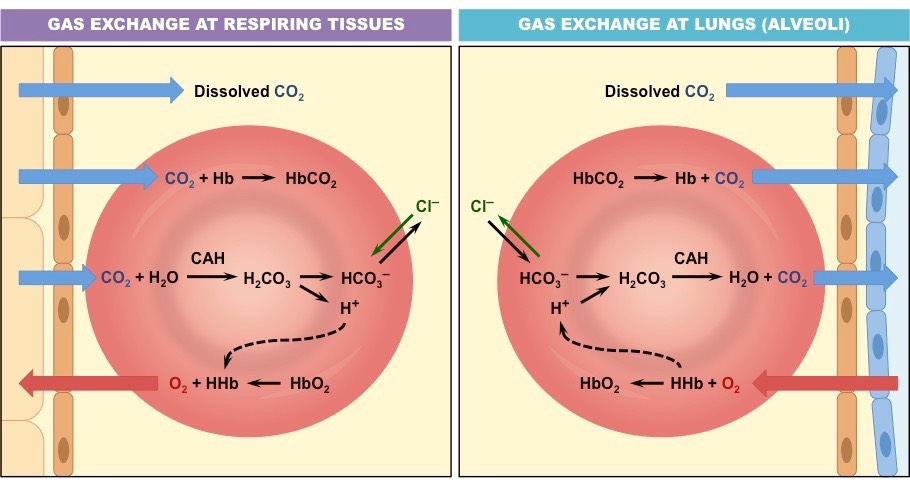![]()
Understanding:
• Carbon dioxide is carried in solution and bound to haemoglobin in the blood
• Carbon dioxide is transformed in red blood cells into hydrogen carbonate ions
Carbon dioxide is transported between the lungs and the tissues by one of three mechanisms:
- Some is bound to haemoglobin to form HbCO2 (carbon dioxide binds to the globin and so doesn’t compete with O2 binding)
- A very small fraction gets dissolved in water and is carried in solution (~5% – carbon dioxide dissolves poorly in water)
- The majority (~75%) diffuses into the erythrocyte and gets converted into carbonic acid
Transport as Carbonic Acid
- When CO2 enters the erythrocyte, it combines with water to form carbonic acid (reaction catalysed by carbonic anhydrase)
- The carbonic acid (H2CO3) then dissociates to form hydrogen ions (H+) and bicarbonate (HCO3–)
- Bicarbonate is pumped out of the cell in exchange with chloride ions (exchange ensures the erythrocyte remains uncharged)
- The bicarbonate in the blood plasma combines with sodium to form sodium bicarbonate (NaHCO3), which travels to the lungs
- The hydrogen ions within the erythrocyte make the environment less alkaline, causing haemoglobin to release its oxygen
- The haemoglobin absorbs the H+ ions and acts as a buffer to maintain the intracellular pH
- When the red blood cell reaches the lungs, bicarbonate is pumped back into the cell and the entire process is reversed
Carbon Dioxide Transport in the Bloodstream

